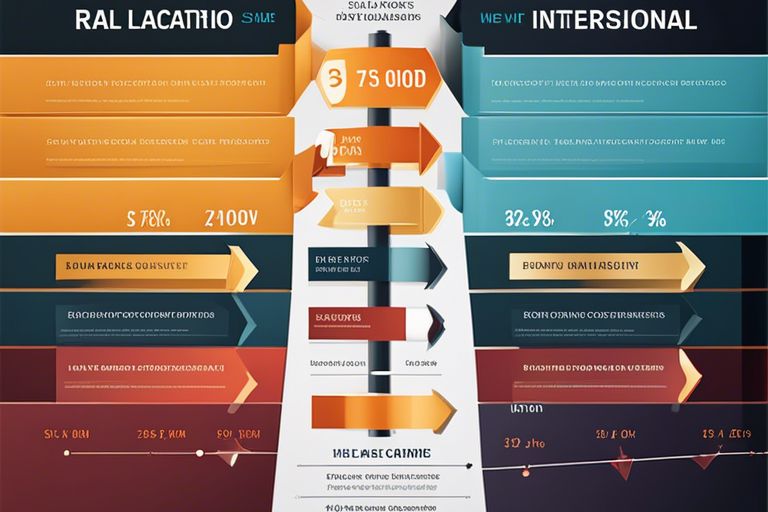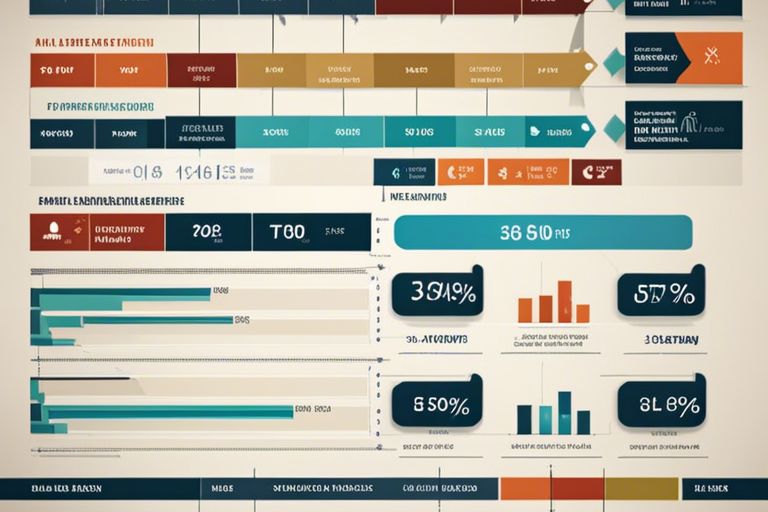This comprehensive guide will explore into the intricacies of fine-tuning your asset allocation strategy to optimize your portfolio’s performance. Asset allocation is a critical element in investment planning, and making strategic adjustments can significantly impact your returns. Stay with us as we walk you through the process of assessing your current allocation, identifying potential areas for improvement, and implementing changes to maximize your investment goals.

Key Takeaways:
- Diversification is necessary: Ensure your portfolio includes a variety of asset classes to spread risk and maximize return potential.
- Regularly review and rebalance: Stay on top of changing market conditions by reviewing your asset allocation periodically and making adjustments as needed.
- Consider your risk tolerance and investment goals: Tailor your asset allocation strategy to align with your comfort level with risk and your long-term financial objectives.
Understanding Asset Allocation
Definition and Importance
The foundation of a successful investment strategy lies in asset allocation. This involves spreading your investments across different asset classes such as stocks, bonds, real estate, commodities, and cash equivalents to create a diversified portfolio. Diversification helps to manage risk by reducing the impact of volatility in any one asset class. Asset allocation is crucial because it determines the overall risk and return of your portfolio.
Types of Assets for Diversification
When considering diversification, it is crucial to consider various types of assets to spread risk effectively. Some common asset classes for diversification include equities, fixed income, real estate, commodities, and cash equivalents. Each asset class has different characteristics and behaves differently under various market conditions. Any well-diversified portfolio should include a mix of these asset classes.
| Asset Class | Description |
| Equities | Ownership in a company |
| Fixed Income | Debt securities like bonds |
| Real Estate | Physical property or REITs |
| Commodities | Raw materials like gold, oil |
| Cash Equivalents | Highly liquid and low-risk assets |
Even though each asset class carries its own risk and return profile, combining them in a diversified portfolio can help mitigate overall portfolio risk. Understanding the characteristics of each asset class is crucial for effective asset allocation.
Factors Influencing Asset Allocation
You have various factors to consider when fine-tuning your asset allocation strategy. Understanding these influences can help you make well-informed decisions to achieve your financial goals successfully.
- Risk Tolerance and Investment Horizon:
Risk Tolerance and Investment Horizon
Investment decisions are often influenced by your risk tolerance and investment horizon. Risk tolerance is your ability to withstand market fluctuations and potential losses. Factors such as age, financial obligations, and investment knowledge can impact how much risk you are comfortable with. Your investment horizon refers to the length of time you plan to invest your money before needing it. Typically, longer investment horizons allow for more aggressive asset allocation strategies, while shorter horizons may necessitate a more conservative approach. The
- Financial Goals and Life Stages:
Financial Goals and Life Stages
Factors such as your financial goals and life stages play a crucial role in determining your asset allocation. Your financial goals, whether it’s saving for retirement, buying a home, or funding your child’s education, can guide your investment choices. Additionally, different life stages such as starting a career, getting married, or nearing retirement can impact the level of risk you are willing to take and the returns you aim to achieve. Understanding how these factors align with your investment objectives can help tailor your asset allocation strategy accordingly.
Step-by-Step Guide to Fine-Tuning Your Asset Allocation
Assessing Your Current Portfolio
All asset allocation strategies should start with a thorough assessment of your current portfolio. It is crucial to understand the composition of your investments, including the percentage of stocks, bonds, cash, and other assets. This analysis will help you identify any areas that may be overweighted or underweighted, allowing you to make informed decisions about potential adjustments.
| Important Details | Dangerous Details |
| Identifying areas that need attention. | Avoiding knee-jerk reactions based on short-term market fluctuations. |
| Diversification across different asset classes. | Ignoring the need for periodic reassessment. |
Balancing and Rebalancing Strategies
The balancing and rebalancing of your portfolio are crucial elements of fine-tuning your asset allocation strategy. Balancing involves setting target allocations for each asset class based on your risk tolerance and investment goals. Rebalancing, on the other hand, is the practice of adjusting your portfolio periodically to maintain those target allocations. This can involve selling overweighted assets and buying underweighted ones to bring your portfolio back in line with your desired mix.
Your balancing and rebalancing strategies should be guided by your long-term financial objectives and risk tolerance. Regularly reviewing and adjusting your portfolio can help you stay on track to meet your goals while managing risk effectively.
Ignoring rebalancing can lead to your portfolio becoming unbalanced and exposed to unnecessary risk. On the other hand, over-rebalancing can result in increased trading costs and tax consequences. Finding the right balance is key to maintaining a healthy asset allocation.
Tips for an Effective Asset Allocation Strategy
Not all asset allocation strategies are created equal. To ensure the success of your investment portfolio, consider the following tips for fine-tuning your asset allocation strategy:
- Diversify your portfolio across different asset classes to reduce risk and increase potential returns.
- Regularly rebalance your portfolio to maintain your desired asset allocation mix.
- Consider your investment goals and risk tolerance when determining your asset allocation strategy.
- Utilize investment time frames to guide your asset allocation decisions.
- Incorporate market trends and economic indicators to make strategic adjustments to your asset allocation strategy.
Utilizing Investment Time Frames
Now, consider your investment time horizon when determining your asset allocation strategy. Short-term goals may require a more conservative approach, while long-term goals may allow for a more aggressive allocation to equities for potential growth.
Incorporating Market Trends and Economic Indicators
Market fluctuations and economic indicators can have a significant impact on your investment portfolio. The ability to adapt to changing market conditions and economic trends is crucial for success in investing. By staying informed and adjusting your asset allocation strategy accordingly, you can position yourself to capitalize on opportunities or protect your portfolio from potential risks.
Pros and Cons of Different Asset Allocation Strategies
Unlike trying to time the market or pick individual stocks, asset allocation is about strategically diversifying your investments across different asset classes to manage risk and optimize returns. Different asset allocation strategies offer various benefits and drawbacks that investors need to consider. Here is a breakdown of the pros and cons of some common asset allocation strategies:
| Diversification | Pros |
| Diversification | Reduces risk by spreading investments across various asset classes |
| Can provide a more stable return over time | |
| Helps capture the performance of different market sectors | |
| Can offset losses in one asset class with gains in another | |
| Cons | |
| May limit potential for high returns from concentrating investments | |
| Requires ongoing monitoring and rebalancing |
For more information on how to achieve optimal asset allocation, check out How to Achieve Optimal Asset Allocation.
Active vs. Passive Management
Active management involves a hands-on approach to buying and selling investments in an attempt to outperform the market. This strategy typically entails higher fees and requires diligent research and monitoring. Passive management, on the other hand, involves tracking a market index with lower fees and minimal trading. Historically, active management has struggled to consistently beat passive strategies over the long term.
Strategic vs. Tactical Asset Allocation
Asset allocation can be approached strategically with a long-term outlook based on financial goals and risk tolerance. Strategic asset allocation involves setting a target mix of assets and periodically rebalancing to maintain that allocation. In contrast, tactical asset allocation involves making short-term shifts in investments to capitalize on market opportunities. While tactical asset allocation can potentially enhance returns, it also increases the risk of making poor market-timing decisions.
Conclusion
Hence, mastering the art of fine-tuning your asset allocation strategy is crucial for maximizing returns while minimizing risks in your investment portfolio. By understanding your risk tolerance, setting clear financial goals, diversifying across asset classes, and regularly reviewing and rebalancing your portfolio, you can create a well-balanced and resilient investment strategy that aligns with your objectives. Recall, asset allocation is not a one-time task but an ongoing process that requires diligence and adaptability to changing market conditions and personal circumstances. With a disciplined approach to asset allocation, you can work towards achieving your long-term financial goals and building wealth over time.
FAQ
Q: What is asset allocation?
A: Asset allocation is the strategic distribution of your investment portfolio across various asset classes such as stocks, bonds, and cash equivalents. It aims to balance risk and return based on your financial goals, time horizon, and risk tolerance.
Q: Why is fine-tuning asset allocation important?
A: Fine-tuning your asset allocation is crucial to ensure that your portfolio remains aligned with your investment objectives and risk tolerance. By periodically reviewing and adjusting your asset allocation, you can optimize returns, manage risk, and adapt to changing market conditions.
Q: How can I optimize my asset allocation strategy?
A: To optimize your asset allocation strategy, consider diversifying across different asset classes, sectors, and geographic regions to reduce concentration risk. Regularly rebalance your portfolio to maintain your target allocation and take into account changes in your financial situation or investment goals.




